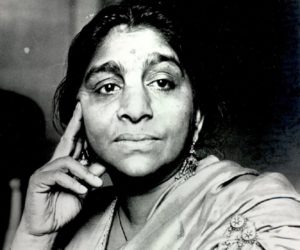
Throughout ages, women have played an underrated role in governance and politics. Their stories are the ones that were denied to us in history classrooms, which makes it all the more important to learn about them. From queens that turned kingdoms with strategy and influence to the ones who led their armies from the frontline, from the legendary queen of Jhansi to the Nightingale of India, Sarojini Naidu, from Indira Gandhi, the Iron Lady to the myriad of women politicians we garner in our Nation today, women have drawn and redrawn the destiny of India, sometimes with the edge of a sword, and other times with the sharpness of their strategic thinking. While we may not be able to tell every story which was lost in the histories written by men, we bring to you a glimpse of that world of genius “stateswomanship”.
Medieval India and Women
From a prestigious early Vedic period to the later Vedic period in the Indian subcontinent, the status of the women deteriorated. From holding a high pedestal in the family as well as in the world of knowledge, she fell to the claims of patriarchy. To protect the identity of the heir and exert control over land, men slowly restricted the role of women in society. As politics began to encompass the daily lives of people, women were further subjugated. It was a miracle to see independent women taking charge of the state and was certainly frowned upon. However, many a time, it has been a woman who saved a kingdom from despair.
In 1230 A.D, the state of Delhi was fully immersed in the Sultanate culture. Qutub Ud Din Aibak had left behind his slave Iltutmish to supervise the kingdom. Iltutmish was the king’s close favourite and was married to Aibak’s daughter, Qutub Begum. Their daughter Raziya Sultan grew up to become one of the most influential women in the history of the Indian subcontinent.
As the granddaughter of the Sultan, Raziya was allowed 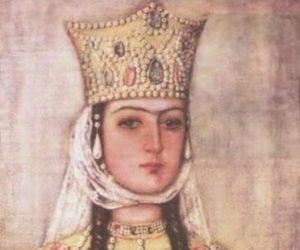 to observe the court and the ministers. She was also introduced to the functioning of the administration and laws that governed the people. Her older brother, Naseeruddin, was meant to be the heir to the throne but died suddenly in 1229 A.D. Iltutmish was left without any suitable male successors, and after reviewing Raziya’s work as the regent in his absence, he decided to appoint her as the next ruler. However, her accession to the throne was not without difficulties. The Turkish nobles were not willing to accept a woman as a ruler and instead, elevated Raziya’s brother, Ruknuddin, to the throne. Yet, his reign was cut short and eventually, Raziya was crowned the Sultan of Delhi.
to observe the court and the ministers. She was also introduced to the functioning of the administration and laws that governed the people. Her older brother, Naseeruddin, was meant to be the heir to the throne but died suddenly in 1229 A.D. Iltutmish was left without any suitable male successors, and after reviewing Raziya’s work as the regent in his absence, he decided to appoint her as the next ruler. However, her accession to the throne was not without difficulties. The Turkish nobles were not willing to accept a woman as a ruler and instead, elevated Raziya’s brother, Ruknuddin, to the throne. Yet, his reign was cut short and eventually, Raziya was crowned the Sultan of Delhi.
She established several institutions centred on the realm of philosophy, sciences, and more. Even though she handled the matters of state with wisdom and grace, she had to face the brunt of rumours and conspiracies that were floated by those plotting her downfall. In a similar scenario, Chand Bibi had stepped up to protect her kingdom and brought her nephew to the throne. She had to fight off several attempts to overthrow the power inherited by Ibrahim Shah and set her legacy in stone.
Yet another example glorifying the governance by women is Rani Durgavati Maravi, born into the family of Chandel King Keerat Rai in Banda, Uttar Pradesh, who ruled the Gondwana kingdom from the year 1550 to 1564. Affiliated with the Rajput roots on her mother’s side, she was equipped with battle skills such as sword fighting and horse riding from a young age. Durgavati was married to Dalpat Shah, the son of Sangram Shah of the Gonds, in 1542.
In 1550, Dalpat Shah passed away and left the control of the kingdom to his five-year old son Vir Narayan. Durgavati acted as the Queen Regent and took over the reins of power aided by her ministers. She conducted various strategies, most importantly moving her capital to Chauragarh situated on the Satpura hill range instead of Singaurgarh.
Gondwana became the envy of many. Baz Bahadur attempted to capture the kingdom in 1556 but failed in the face of Rani Durgavati’s forces. In 1562, she again faced a challenge by the Mughal Empire. One of Akbar’s military general, Khwaja Abdul Khan, was lured into the idea of annexing the neighbouring Gondwana kingdom. Durgavati decided to play a defensive battle at Narrai, not faltering at the sight of the huge Mughal army. She lost her Faujdar during the fight and took on the role of leading the men against Khwaja. Even though both sides incurred losses, Rani Durgavati emerged victorious and defeated the Mughals.
However, Khan returned with stronger forces and although Durgavati was accompanied by her son, Vir, she fought a losing battle. Injured and on the verge of losing consciousness, she predicted that defeat was inevitable and stabbed herself rather than to live and see her kingdom crumble before her eyes.
All these women, represent a chunk of the huge legacy of women or stateswomen in the Mughal era alone. The likes of such exemplary women, broke through the shackles of tradition and prejudices to shun the patriarchal notions of state. Though they met with a constant assembly of obstacles, they were able to carve their names into history and stand as an inspiration for generations to come.
Women of the Indian Freedom Struggle
”घायल होकर गिरी सिंहनी उसे वीर गति पानी थी,
बुंदेले हरबोलों के मुँह हमने सुनी कहानी थी,
खूब लड़ी मर्दानी वह तो झाँसी वाली रानी थी।।“
Subhadra Kumari managed to whip the essence of the raging movement for freedom in our nation, within a modicum of lines. The freedom fighters came up against several British, steel walls of oppression, but they were not afraid to use fire to melt it down. Along with them, women rose up lighting the torches in their own determined hands.
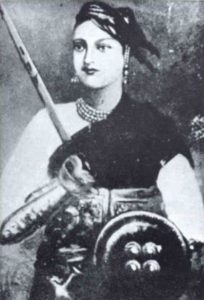 Rani Lakshmi Bai inspired several generations with her incomparable bravery in the battlefield. She refused to give up her son’s birth-right to the throne, away to British tyranny, at the same time, setting an example for the next generation of women. She showed that freedom is integral and no restrictions or demarcations can stop a person from achieving it. Raja Ram Mohan Roy and others such as Dayanand Saraswati had already set the wheels for social progress in motion, surprisingly with the British by their side. Widow Remarriage was sanctioned and the practice of Sati abolished amongst many other reforms.
Rani Lakshmi Bai inspired several generations with her incomparable bravery in the battlefield. She refused to give up her son’s birth-right to the throne, away to British tyranny, at the same time, setting an example for the next generation of women. She showed that freedom is integral and no restrictions or demarcations can stop a person from achieving it. Raja Ram Mohan Roy and others such as Dayanand Saraswati had already set the wheels for social progress in motion, surprisingly with the British by their side. Widow Remarriage was sanctioned and the practice of Sati abolished amongst many other reforms.
The legacy of the warrior Queen carried on for years and was brought to the forefront during the freedom struggle by Sarojini Naidu. Born on 13 February 1879, Naidu was raised in an intellectual household where her father Agore Chattopadhyay wished for her to pursue mathematics or the sciences. However, Sarojini was set on poetry and was awarded a scholarship to King’s College, London by the Nizam of Hyderabad after her matriculation. One of the significant ways in which she broke social barriers and stepped into the shoes of feminism was by marrying G. Naidu, as inter-caste marriages were not taken lightly at the time.
When she returned to India, the immense wave of azaadi swept her away to Gandhi and Gokhale. Naidu travelled the length and breadth of the country spreading awareness about women empowerment and nurtured the seeds of nationalism and sovereignty. In 1917 she helped set up the Women’s India Association whose President Annie Besant worked tirelessly towards freedom of women. The organisation, endorsed by the Congress and the Muslim League, sought to promote equal rights and allow women the same political status in administration as men.
Naidu also followed Annie Besant as the second woman President of the Congress in 1925 and courted arrest innumerable times in protest of the British Raj. Apart from participating in the Salt Satyagraha, she accompanied Gandhi to the Second Round Table Conference in 1931 and also conducted several meetings in far-flung regions of South Africa. When independence finally embraced India, Sarojini Naidu was appointed the Governor of the United Provinces of Agra and Oudh.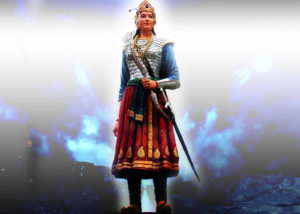
Apart from having an immense political presence, Sarojini also spread the message of patriotism through the weapons of words. Awarded the Kaisar-i-Hind and inducted into the Royal Society of Literature, she has set milestones for women all around the political and literary world. Rani Lakshmi Bai and Annie Besant propagated the same message of empowerment imbibed by this verse of Naidu-
Once in the dream of a night I stood
Lone in the light of a magical wood,
Soul-deep in visions that poppy-like sprang;
And spirits of Truth were the birds that sang,
And spirits of Love were the stars that glowed,
And spirits of Peace were the streams that flowed
In that magical wood in the land of sleep.Lone in the light of that magical grove,
I felt the stars of the spirits of Love
Gather and gleam round my delicate youth,
And I heard the song of the spirits of Truth;
To quench my longing I bent me low
By the streams of the spirits of Peace that flow
In that magical wood in the land of sleep.
The Stateswomen of Independent India
Rajiv Gandhi once said, “ When a big tree falls, the earth shakes. ” When Indira Gandhi died, the entire country and the world went into a frenzy. 31st October, 1984 was a dark day. It took 31 shots for the nation to surrender itself to bloodshed. Seeds of communal riots were sown between the majority and the Sikh population a while ago, setting ground for the tragic massacre following the Prime Minister’s assassination.
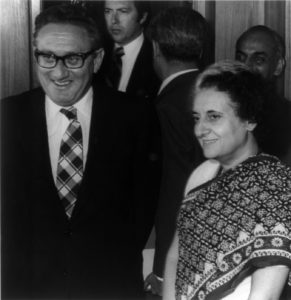
Indira Gandhi’s political wager was built on tremendous support. The first and till date, the only woman Prime Minister of India, she had won the nation’s heart. She led several Left centric policies, paying heed to the poor and downtrodden. However, her political impression took a major step back when she imposed the infamous emergency in 1975. By stripping people of their fundamental rights, censoring the press, and enforcing extreme measures such as forced sterilisation, Gandhi took away the democratic character of a nation that was built on the very foundation of equality and justice.
Despite that, the people of India returned the chair to her after the failure of the Janata Party to deliver on their promises. Indira Gandhi was given the right to govern again and it was simply awe-inspiring to watch populism shape the government and the mindset of a nation.
This seemingly odd characteristic has followed us into the 21st century as well. Similar to Indira Gandhi, Jayaraman Jayalalithaa (fondly known as Amma) managed to uphold the desires of the commoners and is the current Chief Minister of the state of Tamil Nadu. A prolific actress and dancer before entering politics, Jayalalithaa had a popular following over her 140 films spread over the Tamil, Telugu, and Kannada audiences. When she joined the All India Anna Dravida Munnetra Kazhagam (AIADMK), she came with the support of Marudhur Gopalan Ramachandran and apparently the title of his political heir.Re-elected as Chief Minister for the sixth time in 2016, she has gone far beyond cementing her place with the public and the party.
In recent times, the news has been religiously covering the hospitalization of Jayalalithaa. Updates are given out every day, some vary, and others are tinted with rumour or are grossly exaggerated. The people of Tamil Nadu are acting out in their own capacity. A marathon was organised to consolidate support for the good health of Amma. Fasts and prayers are being conducted in various regions and people claim to “know in their hearts that Amma will get better”.
One happens to see the same situation with Indira Gandhi and Jayalalitha being replicated in North India in the form of Mayawati. Having served four terms as the Chief Minister of Uttar Pradesh, she has a strong following and control over the region. Historian and academic Ramachandra Guha has drawn several common strands between the two politicians and one of the most interesting comparisons was that of a handicap that trailed behind the women on their path to political victory. Jayalalithaa was a Brahmin in a state which was dominated by the non-Brahmins and Mayawati was a Dalit in a region overflowing with religious sentimentalities that shunned the Dalits. Despite this “handicap”, both women were able to efficiently capture the support of the masses without any wealth or family connections.
It is almost strange to watch a country transform from subjugating women to a lower status than men to “worshipping” the very ground that they walk on. The domain of politics has also opened up with reservation of seats for women. As the world grows smaller with new advancements, female activists have also taken initiative to bring political change through social movements. Pioneers such as Medha Patkar remain at the forefront but we also begin to see protests at the grassroot level and movements like Pinjra Tod with the objective of female autonomy. It inspires the extremely crucial ability to think in terms of change and development that a person can bring forth in his or her own small way. For when a person starts believing in themselves is when they start believing in the betterment of society.
Written by: Tarini Sudhakar

